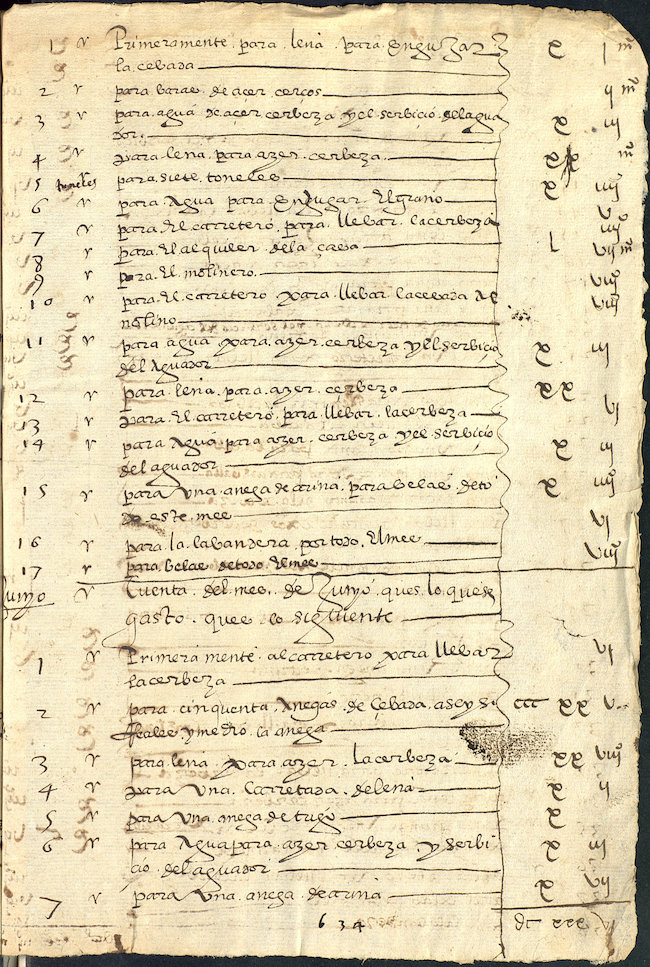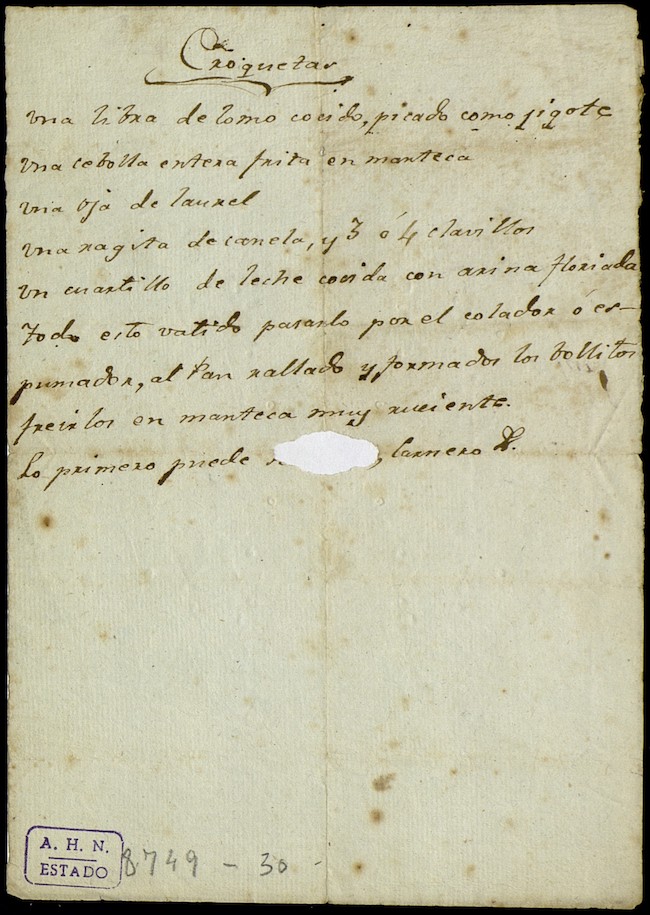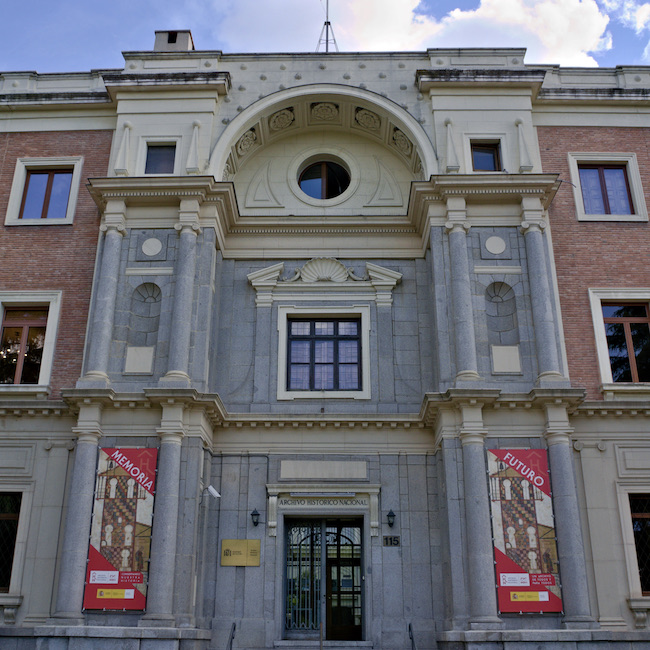by Simon Hunter - @simoninmadrid
.png.transform/rendition-xs/image_image%20(1).png)
In this massive register there is plenty of information about the food and drink that people in Spain have purchased, sold, prepared and consumed over the last 500 years

by Simon Hunter - @simoninmadrid
Spanish croquetas, cod cooked Provençal style, aubergines with tomatoes and ham, and American-style chicken. That list might sound like something off the menu at a typical Madrileño restaurant, but these dishes are in fact just a few examples of the recipes and other details about food and drink that can be found in Spain’s National Historical Archive, and that in some cases date from hundreds of years ago.
Located in a beautiful campus on the upscale Serrano street in Madrid, the Spanish capital, the Archive itself counts on more than 150 years of history.
“We were born thanks to the new political construction of the Spanish state in the 19th century from one of the governments of Isabella II,” explains the director of the archive, Juan Ramón Romero Fernández-Pacheco. “The objectives were to compile all of the documentation that the older institutions had produced but that now weren’t useful, with a view to constructing the national history of Spain, as well as serving as a historical archive for the general administration of the new state and the higher levels of the judiciary.”
Among the historical treasures that find their home within the Archive are more than 200,000 pieces of parchment, the oldest of which dates from the year 696. There are records from the Council of the Spanish Inquisition, information from government ministries stretching back to their creation in the 19th century, and private archives from public figures that have either been purchased or acquired by the Archive over the years.

España. Ministerio de Cultura y Deporte. DOCUMENT OF A BEER FACTORY, [CONSEJOS,24662,Exp.12]
A History of Eating and Drinking in Spain
But there is also plenty of information about the food and drink that people in Spain have purchased, sold, prepared and consumed over the last 500 years, something that prompted archivist Eva Bernal, who has worked at the Archive since 2007, to create a special “gastronomic route” through the records. The project was part of a series of initiatives called the Day of the Archives, aimed at bringing the treasures of the institution closer to members of the public.
“What interests me is anything related to everyday life, and there is nothing more everyday than eating and drinking,” Bernal explains. “On the Day of the Archives we try to find a link between society and the content of the Archive. Even if people have never been inside a library or a museum, they know what they are. But they don’t necessarily know what an archive is.”
Taking a deep dive into the documents available to Bernal has allowed for analysis of what was eaten at different times of Spanish history, what was considered to be gourmet food, and changing trends, such as the arrival of beermakers in 16th-century Spain – a country that until then mostly drank wine.
Among the gems discovered by Bernal is the earliest known recipe for croquetas – containing the usual flour, butter, milk and breadcrumbs but also cinnamon, gammon and laurel – and which dates from the early 1800s.

España. Ministerio de Cultura y Deporte. CROQUETAS RECIPE, [AHN,ESTADO,8749,N.30]
Healthy broths, old school 'croquetas' and an introduction to yummy pastries
Records from hospitals also show which foods were considered to be healthy for which illnesses, as well as detailing the quest in 1772 to create the best hospital broth with which to feed the sick (chicken, chickpeas and saffron are among the ingredients there).
As for the personal archives, a recipe book found among the possessions of José Giral y Pereira (1879-1962), the 75th prime minister of Spain during the Second Spanish Republic, showed his predilection for cooking with salmon, including instructions on how to make both salmon souffle and salmon croquetas.
“It was interesting to find recipes in an important politician’s personal archive,” explains Bernal. “You find information about how people ate in the most unexpected places.”
Another trove of recipes came from the Guild of Confectioners, which provides full explanations of how some of Spain’s most delicious pastries were made toward the end of the 17th century.
“The Guild was a professional organisation and served to control who could enter the trade,” says Bernal. “Candidates had to do an exam to prove that they knew how to do their job accurately.” Among these recipes is turrón, a kind of nougat that is still popular in Spain, especially at Christmas.
What is perhaps most surprising about the recipes compiled by the Archive is how at home they would still be on a Spanish menu. “Whenever you look for any issue you end up being surprised by how close everything is to us and how we live today,” Bernal concludes.
